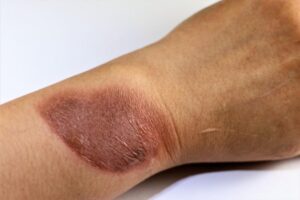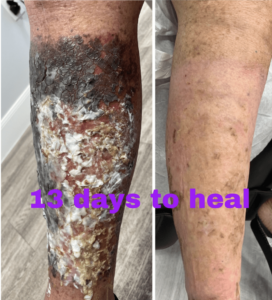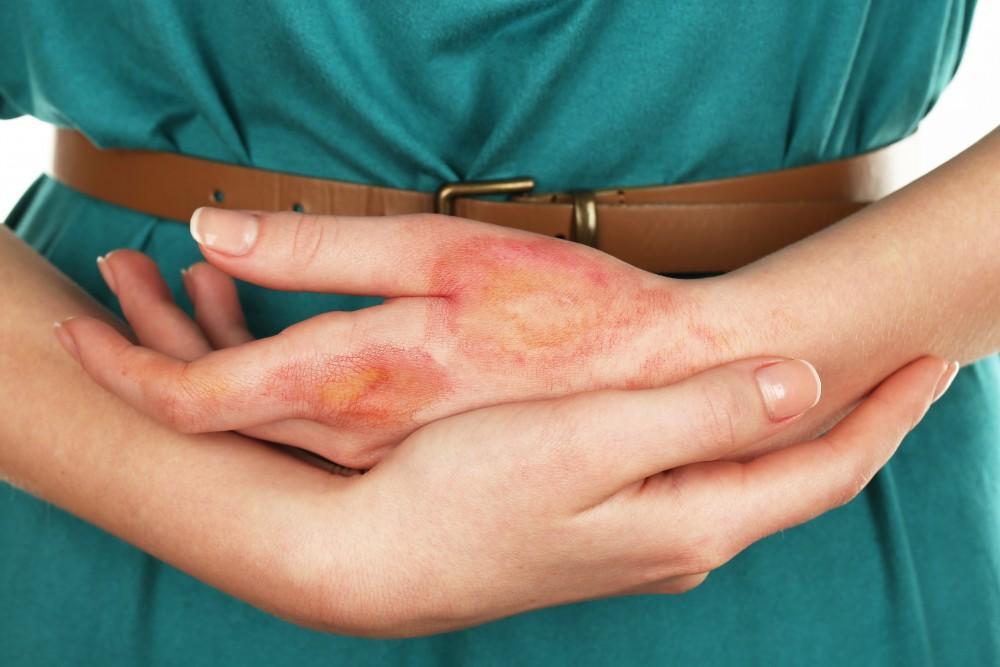Burn injuries happen in many ways, often when you least expect it. From flames to boiling water, chemical spills to a lightning strike. Read on to learn more. Burn injuries happen in many ways, often when you least expect it. From flames to boiling water, chemical spills to a lightning strike. Burn injuries are under-appreciated injuries that are associated with substantial morbidity and mortality. Burn injuries, particularly severe burns, are accompanied by an immune and inflammatory response, metabolic changes and distributive shock that can be challenging to manage and can lead to multiple organ failure. Of great importance is that the injury affects not only the physical health, but also the mental health and quality of life of the patient. Accordingly, patients with burn injury cannot be considered recovered when the wounds have healed; instead, burn injury leads to long-term profound alterations that must be addressed to optimize quality of life.
The aim of this article is not only to give an overview and update about burn care, but also to raise awareness of the ongoing challenges and stigma associated with burn injuries.

Facts:
The WHO estimates that 11 million burn injuries of all types occur annually worldwide, 180,000 of which are fatal. There is a wide variability in the incidence of burn injury. For example, the number of burn-related deaths per 100,000 population ranges from 14.53 in Cote D’Ivoire to 0.02 in Malta. Burn-related deaths of children are 7 to 11 times higher in low-income than in high-income countries.
Classification of Burns
Burn injuries are classified according to its severity — its depth and size. Burns that affect the uppermost layer of the skin (epidermis/superficial skin only) are classed as superficial (first-degree) burns. the skin becomes red and the pain experienced is limited in duration.
Superficial partial-thickness (second-degree) burns are painful, weep, require dressing and wound care, and may scar, but do not require surgery.
Deep partial-thickness (second-degree) burns are less painful owing to partial destruction of the pain receptors, drier, require surgery and will scar.
A full-thickness (third-degree) burn extends through the full dermis and is not typically painful owing to damage to the nerve endings, and requires protection from becoming infected and, unless very small, surgical management.
Finally, a fourth-degree burn involves injury to deeper tissues, such as muscle or bone, is often blackened and frequently leads to loss of the burned part.
Although superficial and superficial partial-thickness burns usually heal without surgical intervention, more severe burns need careful management.
Importantly, burns are classified as either minor or major. A minor burn is usually a burn that encompasses <10% of the total body surface area (TBSA), with superficial burns predominating.
What Happens inside our body after Burn injury?
After the Burn injury, an immediate systemic and local stress response is triggered that, unlike sepsis or trauma, does not recover quickly. Severe burns cause a complex pattern of responses that can last up to several years after the initial insult. In general, immediately after the insult, an inflammatory response is triggered to promote the healing process. However, in severe burns, this inflammatory process can be extensive and become uncontrolled, leading to an augmented inflammation that does not induce healing but rather causes a generalized catabolic state and delayed healing. This response is almost unique to burns and is referred to as the hypermetabolic response; it is associated with catabolism, increased incidence of organ failure, infections and even death.
Once the burn injury severity has been established, the patient needs to be appropriately referred and triaged.
What to do:
1. Stop the Burn
This one may seem obvious, but it’s easy to panic when you’re being burned and in serious pain. The Stop, Drop and Roll trick most of us learned in elementary school comes in handy here.
- Stop: Do not run
- Drop: Cover eyes and nose with hands
- Roll: Curl in a ball and roll to extinguish fire
2. Remove Burned Clothes & Accessories
Clothing can hold heat and cause a deeper injury. Remove all fabrics and jewelry as soon as possible, as swelling of burned skin also happens right away.
- Remove all jewelry, belts, and tight clothing
- If clothing attaches to the skin, cut or tear around it
3. Use Cool Water
Stop the burning process by cooling the burn using running cool (not cold) water for at least five minutes. Continue for up to 40 minutes if it’s a chemical burn. Do NOT use ice.
- Pour cool water over burned areas
- Continue at least 5 minutes
- Continue 30-40 minutes for chemical burn
4. Cover Burns
Cover the burn with a sterile gauge bandage or clean cloth. Wrap the burned area loosely to avoid putting too much pressure on the burn tissue.
- Use clean, dry dressings, bandage or sheet
5. Stay Warm
People with significant burns are prone to hypothermia due to loss of skin. Keeping a normal body temperature is important to encourage normal body function such as blood clotting.
6. Seek Medical Attention
Based on the severity, Triage in ER will determine whether Hospital treatment or wound/Burn care center visit will be needed to heal the Burn Injury.
What NOT to do:
- Apply Ice – This may increase the extent of injury and cause hypothermia.
- Use Ointments or “Home Remedies” – These may cause infection and make the injury worse.
- Pop blisters – Leave them intact to heal naturally.
- Wait – Get medical help immediately if the burn is larger than the size of the victim’s palm.

At Vayu Advanced Wound Clinic & Hyperbarics, you will be evaluated by Dr. Badam and create a care plan to treat your Burn Wounds, prevent scarring while also providing compassionate moral support.
At Vayu we have treated many different Burn injuries including Radiation Burn injuries with advanced wound healing products, procedures and Cultured skin grafting as shown in the picture below.
Patient has healed from severe Burn injuries on her leg to a normal looking skin just in 13 days after presentation.

Causes of burns
Burns are tissue damage caused by various external factors. Common causes include:
- Thermal Burns: Contact with hot liquids (scalds), flames, steam, or heated objects.
- Electrical Burns: Exposure to electrical currents, such as faulty wiring or lightning.
- Chemical Burns: Skin or eye exposure to acidic or alkaline substances, including cleaning agents, industrial chemicals, or household products.
- Radiation Burns: Overexposure to UV rays from the sun or radiation therapy.
- Friction Burns: Skin damage from rubbing against a rough surface, such as road rash or treadmill injuries.
- Cold Burns (Frostbite): Prolonged contact with extremely cold temperatures or objects like ice.

